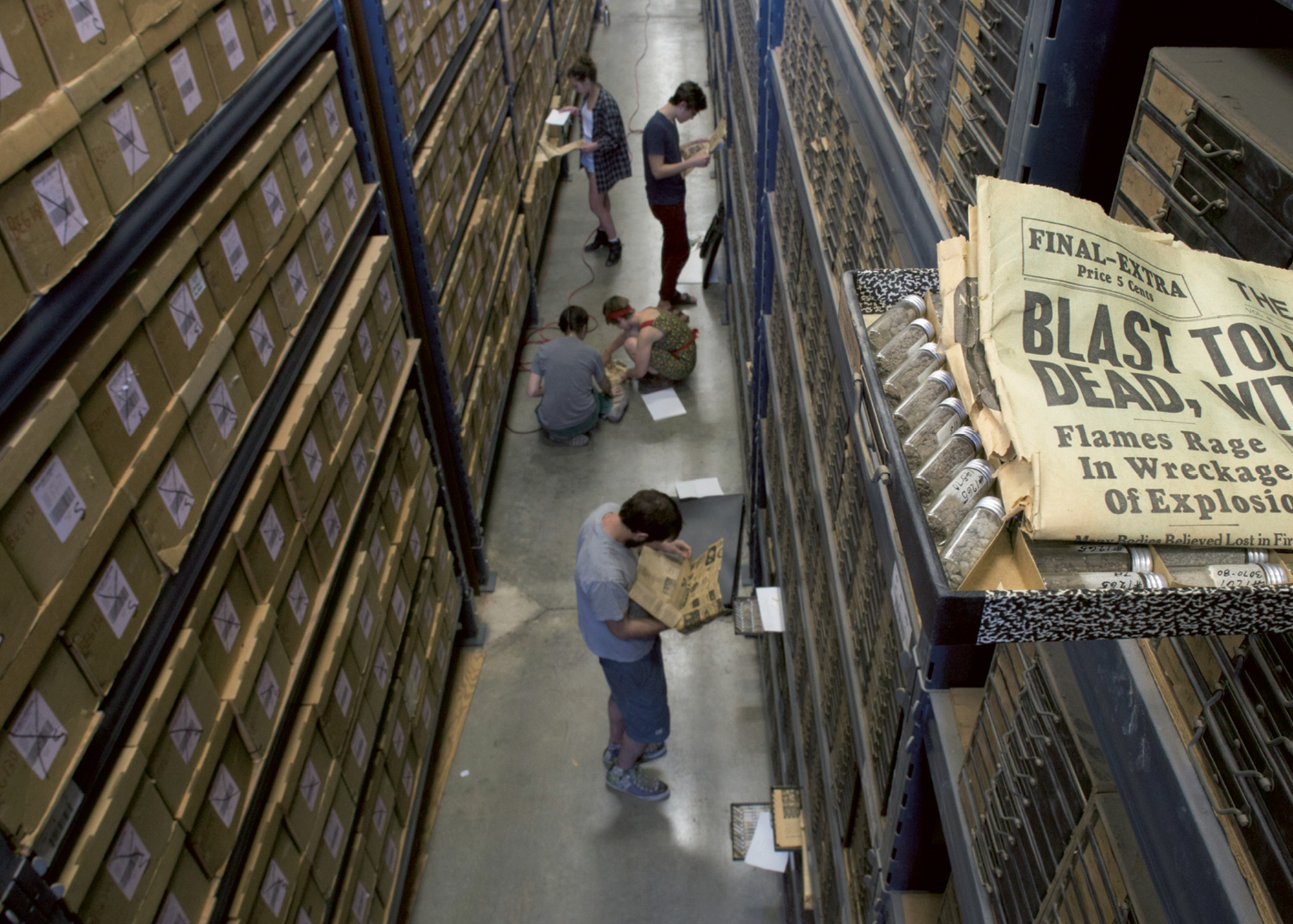Artist Project / An Archive within an Archive within an Archive
Yesterday’s news
David Brooks

At the Austin Core Research Center (CRC) of the University of Texas there is a hangar-sized warehouse containing an archive of more than two million rock core samples and well logs. These vast holdings span the entire era of prospecting for oil in Texas, from the nineteenth century through the oil boom years of the turn of the twentieth to today, with more recent examples also coming from elsewhere in the United States and from abroad. Core samples are now extracted in lengths upward of fifteen hundred feet from depths exceeding twenty thousand feet, at a cost of more than four million dollars per sample. Once the productivity of a well or reservoir is determined, oil companies have no reason to keep these cores and cuttings. However, the University of Texas at Austin does, finding great value in the geological data provided by these costly and irreplaceable artifacts, and has for decades been amassing a monumental repository of these by-products of the oil industry.
The stories buried within these stones laid dormant for 250 million years before they were excavated during the oil boom. Now, at the CRC, they await either the renewed attentions of geologists, or further technological advancements that will allow the detection of lower levels of hydrocarbons and the more efficient extraction of fossil fuels from the samples’ point of origin. Recently, with advancements in hydraulic fracturing technology—popularly known as fracking—and the volatility of the energy market, this sleepy archive of stone is awakened more frequently. Given that housing communities and other large-scale developments have been built on what was once the uninhabited land from which older cores and cuttings were extracted decades ago, the prospects of sampling underneath these densely populated areas proves too costly and bureaucratically complex. Thus, the original samples are proving invaluable for studying and prospecting these lands.
One of the more unique archives within this larger archive consists of a notably antique but well-organized set of drawers—dating back to the first decades of the twentieth century. Within each of these drawers are dozens of glass vials containing rock cuttings, all neatly arranged and hand-labeled to note the depth from which they were taken within their respective wells. With eighty vials per drawer, ten drawers per box, ten boxes per shelf, fourteen shelves per bay, and sixty bays—totaling nearly seven million vials—the architecture required to house this archive within an archive takes on a visual opulence as expansive as its contents. As the samples were collected in the field, and shuttled from one lab to another, there was a risk that the movement would agitate the sediments and disturb their composition, not to mention the possibility of the glass vials breaking. One obvious solution to the problem of excessive rattling was to simply stuff the day’s newspaper into each drawer.